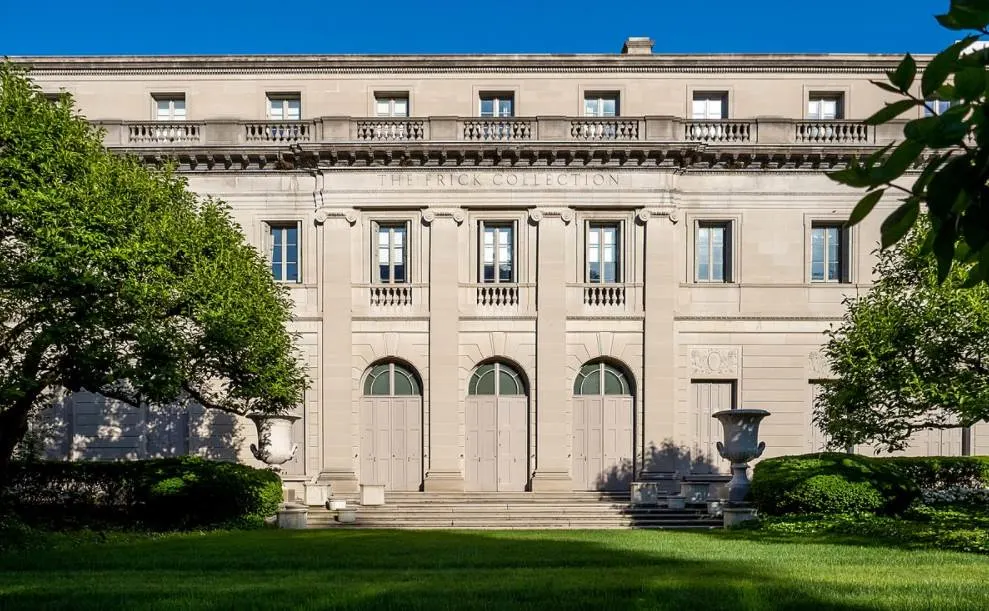Most of the paintings by Vermeer depict a scene featuring one or several people in one of the rooms of his own house.
Johannes Vermeer (1632-1675) painted extremely slowly as this allowed him to fully focus on the details. He mastered the technique of making light reflect on common objects.
In this article, we’ll take a closer look at some of the most interesting facts about Girl Interrupted at Her Music by Vermeer, a trademark painting by the Dutch master.
1. It was probably completed when Vermeer was in his late twenties
Johannes Vermeer was a Dutch painter who lived and worked most of his life in his native city of Delft. He got married in his early twenties to a relatively rich woman and they lived in the house of his wife’s mother.
Many of his paintings depict scenes inside this house which can be qualified as upper middle class. We know this because the artist of the Baroque era often included items only owned by people who were well off in the 17th century.
The dating of Vermeer’s paintings is often based on stylistic elements, not because he added the date to it.
It’s estimated that he completed Girl Interrupted at Her Music between 1658 and 1659 which means that he was about 26 or 27 years old upon completion.

2. It depicts a common subject in the oeuvre of Vermeer
The room isn’t the only recurring subject in Vermeer’s oeuvre, the light source coming from the left is also present multiple times.
9 other paintings by Vermeer feature this same paneled window, including Woman with a Water Jug, The Music Lesson, and Woman Holding a Balance.

The girl is perhaps the music student of the man who is showing her papers with musical verses. A musical instrument lies on the table.
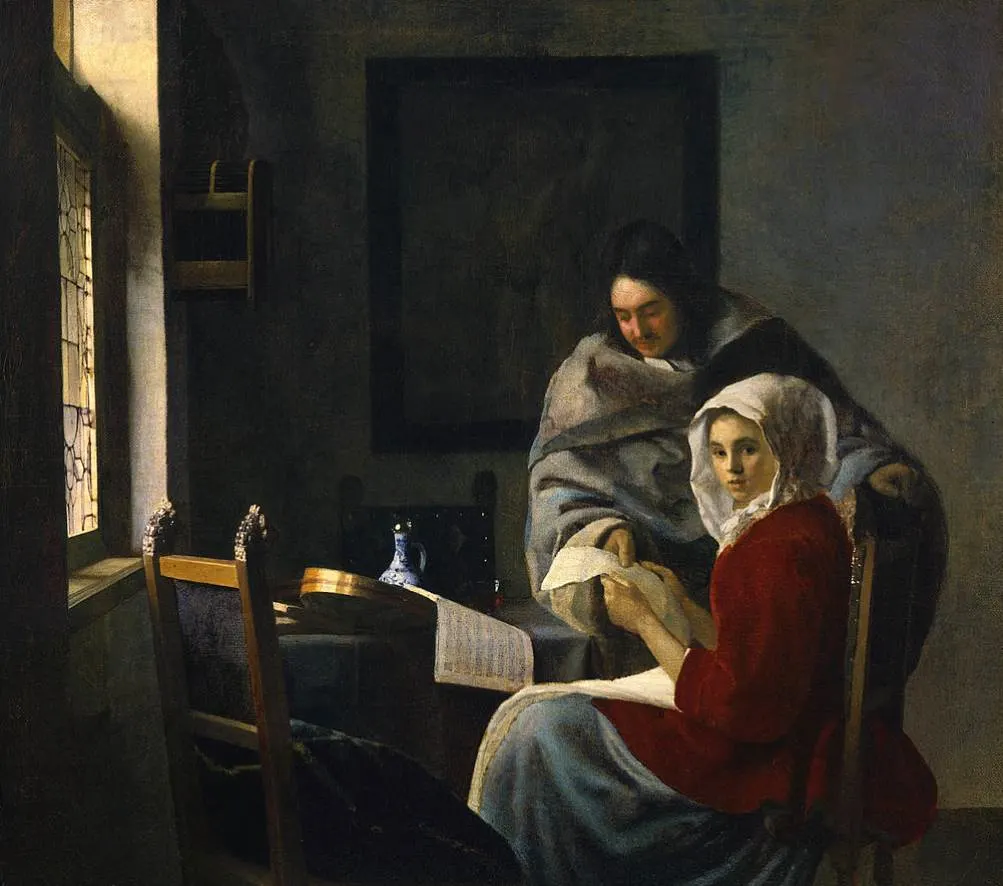
3. Vermeer used a clever trick to depict the interruption in a static painting
Paintings are essentially snapshots of a single moment. Many Dutch artists in Vermeer’s days aimed to depict this moment and used a specific action to define what the painting was about.
Vermeer’s first attempt at this was in a work titled “Officer and Laughing Girl” (1657). The forced laugh of the girl indicates the action is somewhat artificial.
The artist learned from this and made the girl stare at the viewer in Girl Interrupted at Her Music to depict the interruption.
Because of this, her face didn’t require forced gestures as her expression looks natural for somebody who is being interrupted.

4. The artist left some clues that this is a courtship scene
Although we don’t know what the relationship between the man and the girl in this painting is, Vermeer did add some features that there is love involved.
Music was associated with love in the 17th century and both the and the girl hold the same piece of paper. This might indicate that this is a courtship scene.
Another remarkable element is the glass of red wine on the table. This is not merely an indication of the status of the couple but also a symbol of seduction and love.
The fact that the wine is still full and untouched means that this might be the start of a relationship.
The Cupid painting on the wall in the background is another reference to love. The Cupid holds a card with “I” and was probably based on an emblem completed in 1608 titled “Amorum Emblemata.”
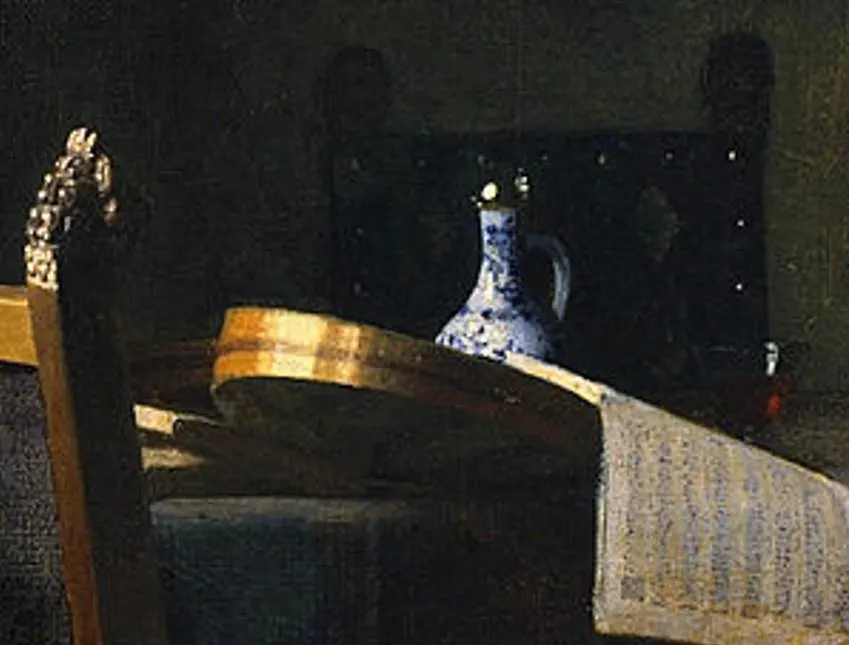
5. The birdcage in the top left corner wasn’t painted by Vermeer
Many items such as the Delft porcelain vase and the Cupid painting on the wall are recurring items in Vermeer’s paintings.
One item that doesn’t appear in any other word and frankly doesn’t belong inside this room is the birdcage in the top left corner.
This peculiar feature just next to the window that serves as the only source of light was painted on by somebody else at a later date.
The quality of the light that reflects on it is also significantly less good than on the other items.
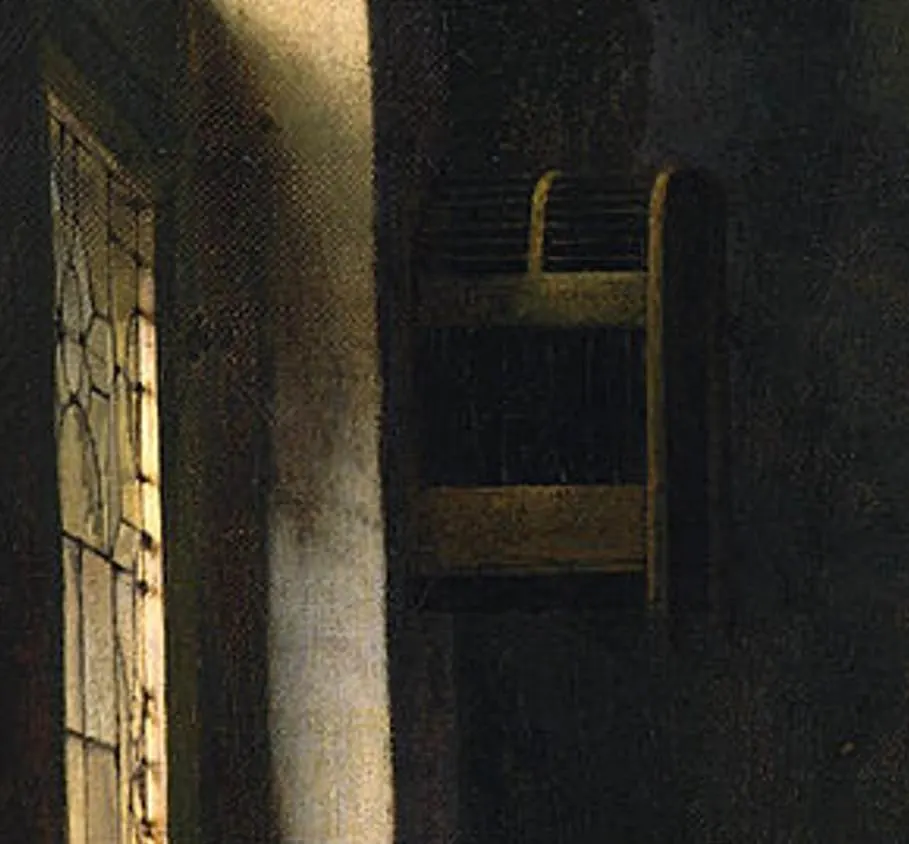
6. The barely visible Cupid painting emphasizes the bad condition of the work
Before 1907, there was no trace of a painting on the back wall of the room. It wasn’t until then that the painting was restored.
This made it possible to identify this artwork as a Cupid painting, although it still remains pretty hazy. This area of Vermeer’s painting emphasizes the bad condition in which the work is today.
Only the items on the table and the chairs remain of the same quality today as they appeared shortly after the painting was completed.

7. How big is Girl Interrupted at Her Music by Johannes Vermeer?
The Dutch artist didn’t become world-famous because of the monumental paintings that he produced. Many of his paintings are small to medium-sized.
Girl Interrupted at Her Music is a small oil on canvas painting that has dimensions of 39.4 × 44.5 centimeters (15.5 × 17.5 inches).
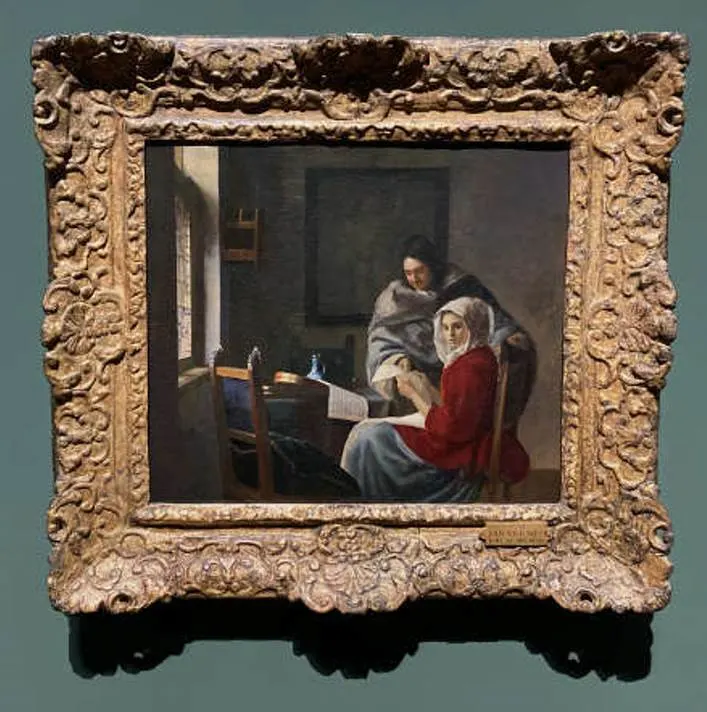
8. Where is the painting located today?
The painting was rediscovered in the 19th century and was sold multiple times in the Netherlands for amounts ranging between 330 and 630 florins.
It was sold to an art collector in London in 1853 and acquired by the American industrialist and art collector Henry Clay Frick in 1901.
Today, the painting is on display at the Frick Collection in New York City, a museum that also houses two other Vermeer paintings titled “Officer and Laughing Girl” (1657) and “Mistress and Maid” (1667).
